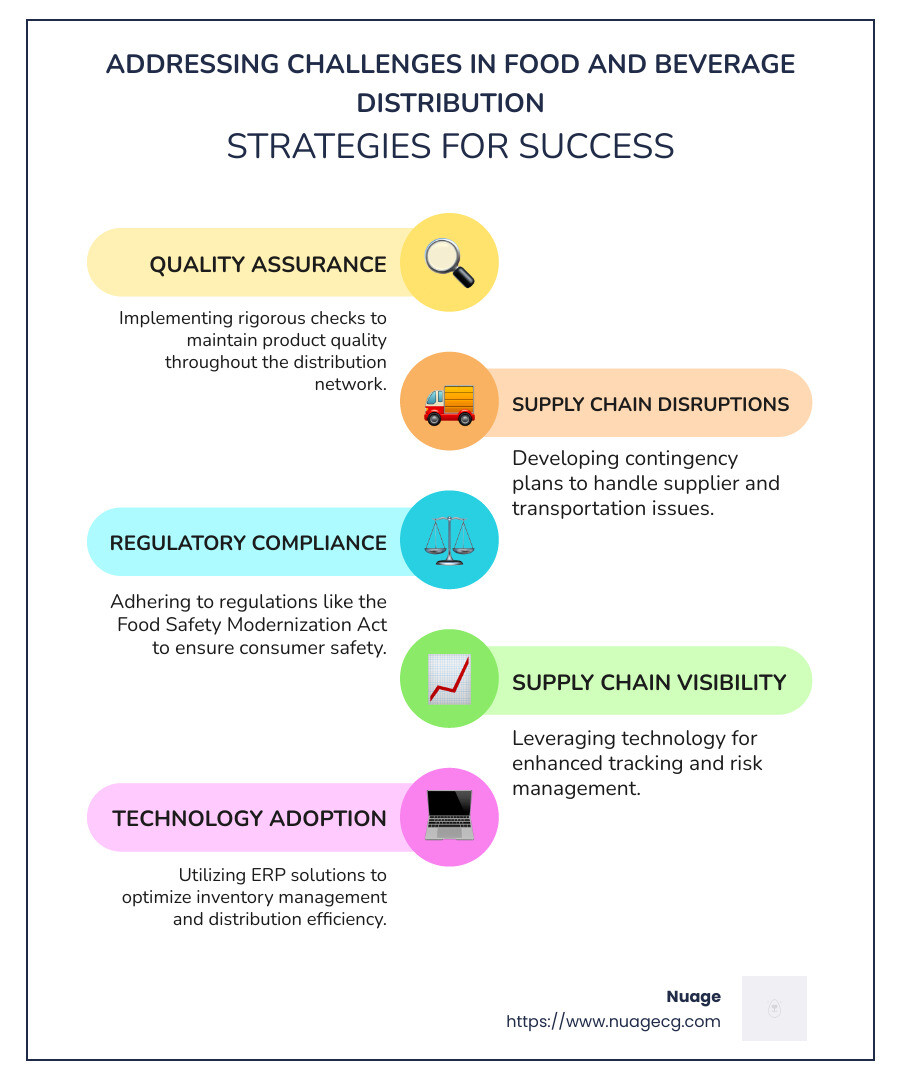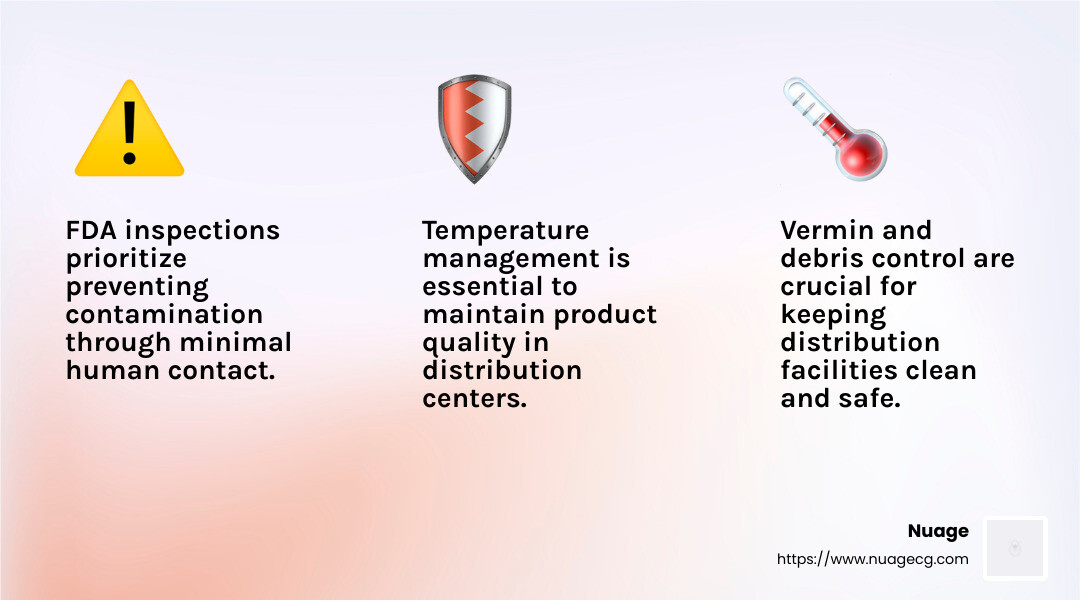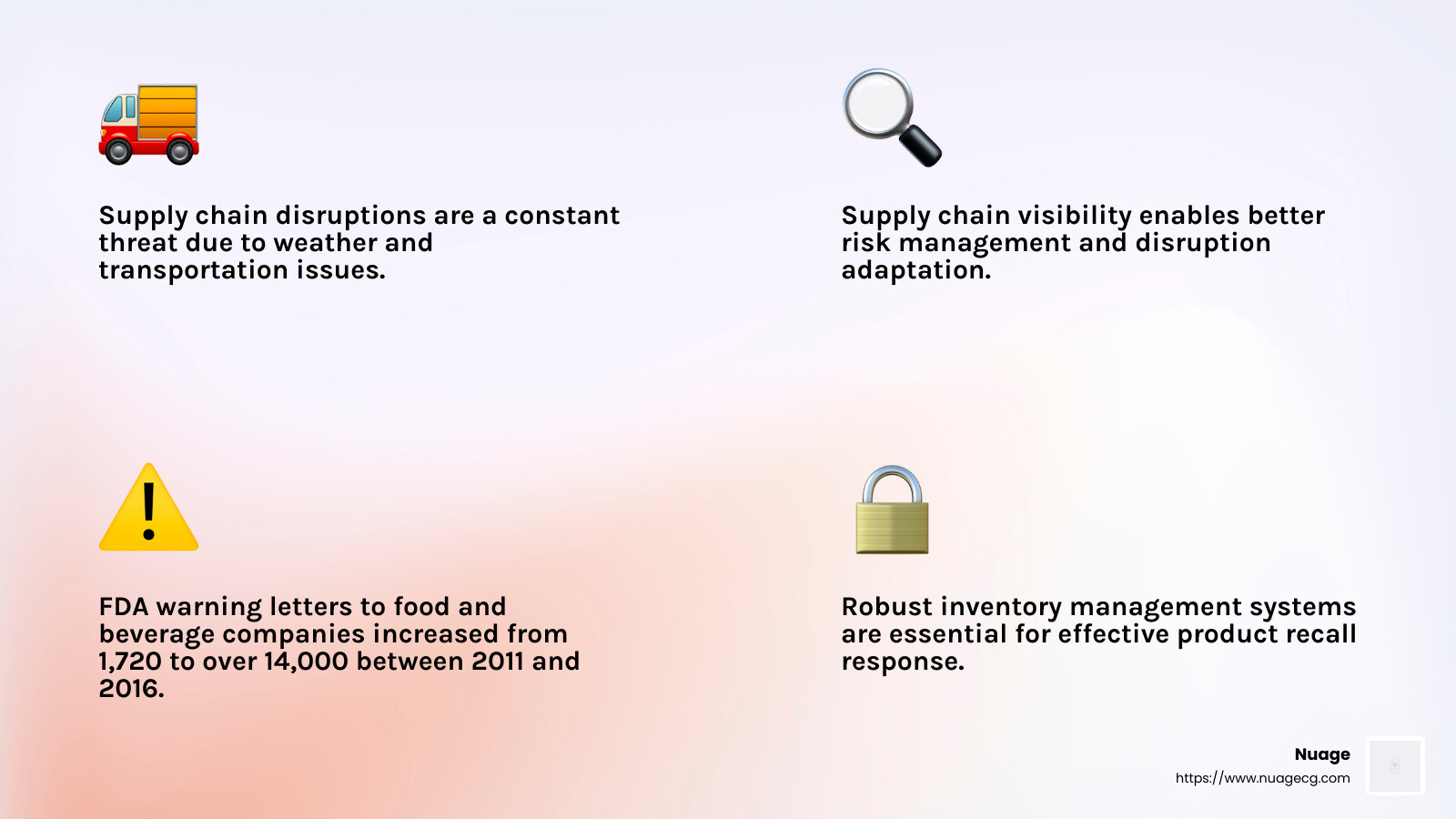Food and beverage distribution is a vital link between producers and consumers, ensuring that high-quality products reach stores, restaurants, and homes promptly. This sector faces unique challenges:
- Quality Assurance: Maintaining product quality and safety across vast networks.
- Supply Chain Challenges: Navigating disruptions due to suppliers, transportation issues, and stringent regulations.
We’ll explore why these challenges exist and how they can be addressed.
As someone deeply familiar with the complexities of food and beverage distribution, I’m here to offer insights and solutions. I’m Louis Balla, a partner at Nuage specializing in NetSuite, with over 15 years of experience in digital change and the supply chain. My aim is to guide your business toward leveraging technology for better distribution management.

Simple food and beverage distribution word guide:
– erp for food and beverage industry
– food distribution erp
– netsuite for food and beverage
Understanding Food and Beverage Distribution
Food and beverage distribution is a complex web that connects producers with consumers, involving numerous players and processes. At its core, this network ensures that products like your morning coffee or favorite snack reach you in perfect condition. But how does this intricate system work?
Key Industry Segments
The distribution industry is divided into distinct segments, each catering to specific needs:
- Grocery Distribution: This segment channels products to supermarkets and retail stores. It’s all about getting those consumer packaged goods (CPG) onto the shelves where shoppers can find them.
- Food Service Distribution: Think of restaurants, hospitals, and schools. This segment supplies them with the necessary ingredients and products to prepare meals for their patrons. Companies like Sysco and US Foods are major players here, serving a wide range of clients.
- Convenience Store Distribution: This focuses on smaller retail outlets, where quick snacks and essential items are a priority. It’s about speed and efficiency, ensuring that convenience stores are always stocked.
- Specialty Distributors: These cater to niche markets, providing fresh produce, seafood, meats, and ethnic foods. They play a crucial role in delivering artisanal and specialty items that require special handling.
Regulatory Environment
Ensuring safety and quality in food and beverage distribution is non-negotiable. This is where regulations like the Food Safety Modernization Act (FSMA) come into play. The FSMA empowers the FDA to inspect distributors, ensuring that consumables remain safe from contamination and other risks.
FDA inspections focus on:
- Human Contact: Ensuring minimal direct contact to prevent contamination.
- Vermin and Debris Control: Keeping facilities clean and pest-free.
- Temperature Management: Maintaining products at safe temperatures to preserve quality.

Distribution centers must meet these stringent consumer safety standards to maintain their operations. Facilities are designed to provide a food-safe environment, minimizing risks and ensuring that products maintain their integrity from the warehouse to the consumer.
By understanding these segments and regulatory requirements, businesses can better steer the complexities of food and beverage distribution. For those looking to streamline their operations, integrating advanced ERP solutions like NetSuite can offer the visibility and control needed to excel in this challenging landscape.
Top Challenges in Food and Beverage Distribution
Navigating food and beverage distribution is no small feat. The industry faces unique problems that require quick thinking and robust strategies. Two of the most pressing challenges are supply chain visibility and product recalls and safety.
Supply Chain Visibility
Supply chain disruptions are a constant threat in the food and beverage industry. From unpredictable weather conditions to transportation hiccups, each layer of the supply chain can introduce risks. To manage these, distributors must prioritize visibility.
Visibility means having a clear view of every step in the supply chain. This allows for better risk management and helps in adapting to disruptions swiftly. Building strong supplier relationships is also crucial. By maintaining open lines of communication, distributors can anticipate issues and adjust their strategies accordingly.
A key tool in achieving this visibility is technology. Advanced ERP solutions like NetSuite provide real-time data and analytics. They help distributors track inventory, monitor supplier performance, and make informed decisions quickly.
Product Recalls and Safety
Product quality and safety are paramount in food and beverage distribution. A single recall can tarnish a company’s reputation and impact its bottom line. According to the FDA, the number of warning letters issued to food and beverage companies skyrocketed from 1,720 to over 14,000 between 2011 and 2016. This underscores the importance of maintaining high safety standards.
Recalls can be costly and damaging. They require immediate action to trace affected products and communicate with all parties involved. Effective inventory control is essential in these situations. Distributors need to know exactly where their products are at all times.
Implementing a robust inventory management system can mitigate these risks. By leveraging technology, companies can maintain control over their inventory and respond to recalls swiftly. This not only protects their reputation but also ensures consumer safety.

In summary, overcoming these challenges requires a combination of technology, strong supplier relationships, and vigilant risk management. As we dig into leveraging technology for distribution efficiency, we’ll explore how digital tools can further improve these capabilities.
Leveraging Technology for Distribution Efficiency
In the world of food and beverage distribution, technology is a game-changer. Digital tools and advanced systems not only streamline operations but also improve flexibility and efficiency. Let’s explore how ERP solutions like NetSuite are revolutionizing the industry.
Role of ERP in Distribution
Enterprise Resource Planning (ERP) systems have become indispensable in managing complex supply chains. These systems offer a unified platform that integrates various business processes, from inventory management to financials, providing real-time insights into operations.
NetSuite is leading the charge with their robust ERP solutions. They offer comprehensive supply chain visibility, allowing distributors to track products from farm to table. This transparency is crucial for making informed decisions and adapting to market changes swiftly.
NetSuite is known for its seamless integration and user-friendly interface, it helps distributors manage orders across multiple channels, ensuring a smooth buying experience for customers.
Enhancing Flexibility and Efficiency
In an industry where trends change as quickly as the weather, flexibility is key. Automation and digitalization are pivotal in adapting to these shifts. By automating routine processes, distributors can focus on strategic decisions and trend adaptation.
Automation in supplier management ensures timely orders and reduces the risk of human error. This not only strengthens vendor relationships but also ensures a steady supply of products, even during disruptions.
Moreover, inventory management systems integrated with ERP solutions help maintain optimal stock levels. They provide alerts for low inventory and identify slow-moving products, allowing distributors to adjust their strategies proactively.
Incorporating these technologies not only boosts operational efficiency but also improves the ability to respond to consumer demands quickly. As we continue to explore the art of distribution, we’ll address frequently asked questions about the industry’s landscape and its major players.
Frequently Asked Questions about Food and Beverage Distribution
Who are the big players in foodservice distribution?
In food and beverage distribution, a few key players dominate the market. These companies have established themselves through extensive distribution networks and diverse client bases.
- Sysco Corporation: As the largest food and beverage distributor in the USA, Sysco boasts an annual revenue exceeding $68 billion. They serve a wide range of clients, including restaurants, healthcare providers, and educational institutions. With over 330 distribution centers across North America, Sysco’s vast network is a testament to their industry leadership. Learn more about Sysco.
- US Foods: Known for its focus on quality and customer service, US Foods operates over 70 distribution centers. They cater to a variety of clients, from small restaurants to large institutions. This versatility makes them a significant player in the foodservice distribution landscape. Explore more about US Foods.
- Performance Food Group (PFG): Another major player, PFG, provides a broad range of products and services. They focus on delivering fresh and frozen foods, as well as beverages and equipment, to various foodservice establishments. Their commitment to supply chain efficiency and customer satisfaction ensures their position as a leader in the industry.
How does Sysco compare to other distributors?
Sysco stands out in the food and beverage distribution industry due to its extensive reach and comprehensive product offerings. With an annual revenue that surpasses $68 billion, Sysco’s financial strength is best. Their focus on customer service and supply chain efficiency sets them apart from competitors like US Foods and PFG.
Sysco’s client range is vast, serving restaurants, healthcare facilities, and lodging establishments. This diversity allows them to adapt to market changes and maintain a strong presence across various sectors. Their industry leadership is further reinforced by their commitment to innovation and sustainability.
What is the role of a food service distributor?
A food service distributor plays a crucial role in the supply chain by ensuring that food and beverage products reach their intended destinations efficiently. Here’s a breakdown of their responsibilities:
- Product Provision: Distributors source a wide range of products, from fresh produce to frozen goods, ensuring that clients have access to the items they need.
- Client Types: They cater to diverse clients, including restaurants, schools, hospitals, and hotels, providing custom solutions to meet specific needs.
- Distribution Network: Distributors maintain extensive networks that enable them to deliver products promptly. This involves managing logistics, warehousing, and transportation to ensure timely delivery.
Food service distributors are the backbone of the industry, connecting producers with consumers through efficient and reliable networks. As we continue to explore the intricacies of distribution, understanding these roles helps highlight the importance of technology and innovation in this changing field.
To enhance distribution efficiency and management, many companies are turning to advanced software solutions like NetSuite. These platforms offer comprehensive tools for managing supply chains, optimizing logistics, and ensuring quality control, making them invaluable in the food and beverage distribution sector.
Conclusion
At Nuage, we understand that navigating the intricate landscape of food and beverage distribution requires more than just a keen eye for logistics—it’s about embracing digital change and leveraging cutting-edge technology to stay ahead.
Digital Change Expertise
In today’s world, digital change is not just a buzzword; it’s a necessity. Companies in the food and beverage sector are increasingly turning to digital solutions to streamline operations and improve efficiency. At Nuage, we specialize in guiding businesses through this change. Our expertise lies in helping companies adopt the right technology to meet their unique needs, ensuring they are not just keeping up, but leading the way.
ERP Implementation
Implementing an ERP system can seem daunting, but it doesn’t have to be. With over 20 years in the ERP business, we have honed our skills in selecting, implementing, and supporting ERP solutions like NetSuite. Our approach is custom to each client’s specific requirements, ensuring a smooth transition and maximum return on investment.
ERP systems play a pivotal role in enhancing supply chain visibility, managing inventory, and fostering robust supplier relationships. By integrating these systems, businesses can not only improve operational efficiency but also adapt quickly to market trends and disruptions.
Partnering for Success
At Nuage, we believe in building lasting partnerships with our clients. We are more than just a service provider; we are your partners in success. Our commitment is to walk alongside you every step of the way, from initial consultation to full implementation and beyond.
As the food and beverage industry continues to evolve, embracing digital change and ERP solutions will be key to thriving in this dynamic environment. With Nuage by your side, you can confidently steer this journey, ensuring quality, efficiency, and sustainability in your distribution operations.
Explore how we can help transform your business with our NetSuite solutions. Let’s start on this journey together, ensuring your success in the art of distribution.
